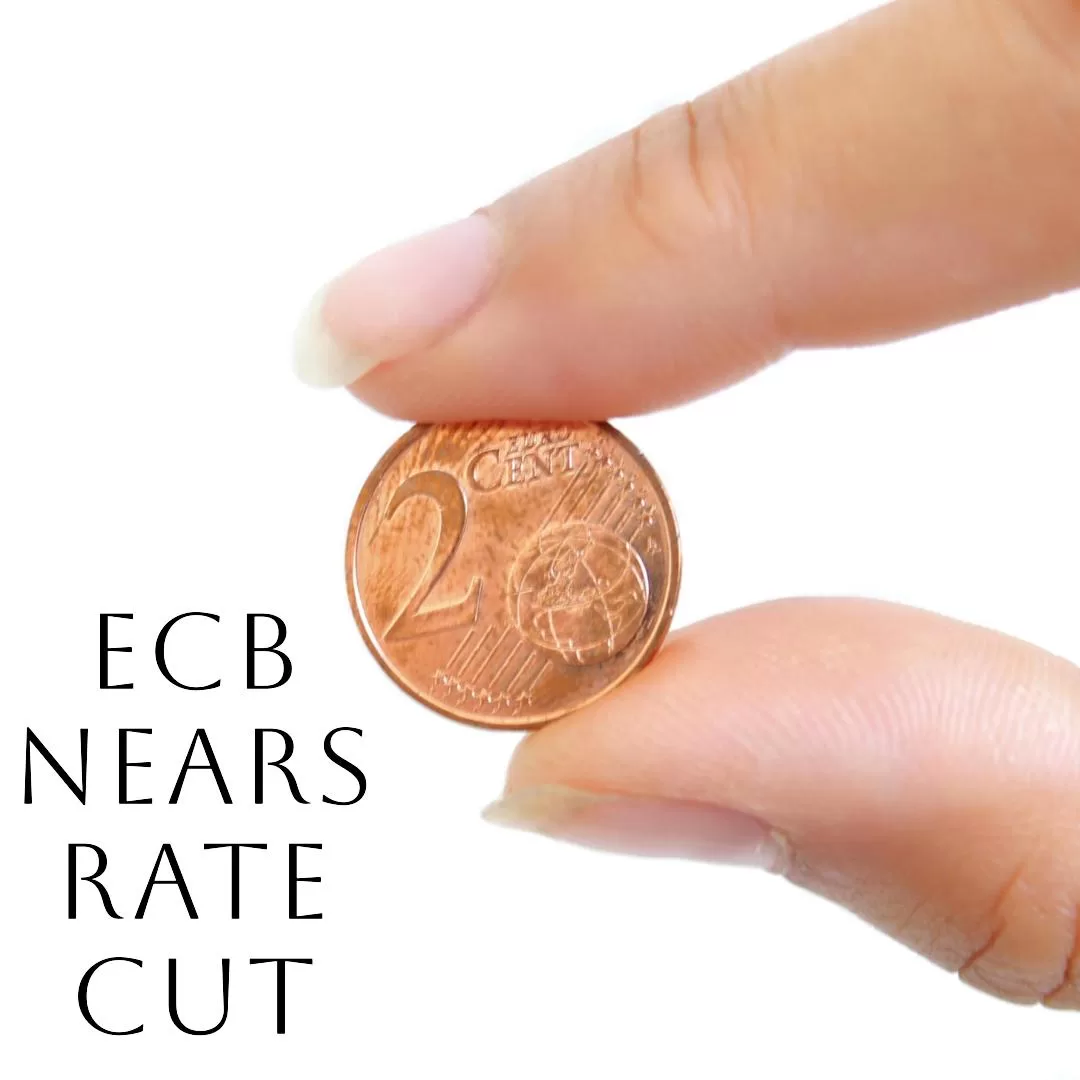The European Central Bank (ECB) is inching toward the possibility of a rate cut as economic challenges loom large over the Eurozone. Amidst persistent concerns about sluggish growth, stubbornly low inflation, and mounting geopolitical tensions, policymakers at the ECB are facing mounting pressure to take decisive action to stimulate the economy. In this article, we delve into the factors driving the ECB’s deliberations and assess the potential implications of a rate cut for the Eurozone economy. European Central Bank Nears Rate Cut – How will markets react?
Economic Headwinds:

The Eurozone economy is grappling with a host of challenges, including tepid growth, subdued inflation, and geopolitical uncertainties. Despite initial signs of recovery from the COVID-19 pandemic, the pace of economic expansion has faltered in recent months, weighed down by supply chain disruptions, energy price shocks, and lingering effects of pandemic-related restrictions. Moreover, escalating geopolitical tensions, including the conflict in Ukraine and energy supply concerns, have added further uncertainty to the economic outlook.
Inflation Concerns:
Inflationary pressures remain subdued in the Eurozone, falling short of the ECB’s target of close to but below 2%. Despite efforts to stimulate inflation through monetary stimulus measures such as quantitative easing and negative interest rates, inflationary dynamics have remained stubbornly muted. With energy prices surging and supply chain disruptions driving up costs, policymakers are increasingly concerned about the risk of deflationary pressures and the need for additional stimulus to boost inflationary expectations.
Policy Response:
In response to mounting economic challenges, the ECB is signaling a readiness to take action to support the economy and ensure price stability. While interest rates in the Eurozone are already at historic lows, policymakers are considering the possibility of further rate cuts to provide additional stimulus. A rate cut would lower borrowing costs for businesses and consumers, stimulating investment, consumption, and economic activity. Moreover, a more accommodative monetary policy stance could help bolster confidence and mitigate downside risks to the economic outlook.
Market Expectations:
Financial markets are closely monitoring developments at the ECB, with expectations mounting for a potential rate cut in the coming months. Bond yields have trended lower, reflecting anticipation of further monetary easing measures. Moreover, the euro has weakened against major currencies as investors factor in the prospect of looser monetary policy. Any signals from ECB policymakers suggesting a shift towards a more dovish stance are likely to trigger market reactions and influence investor sentiment.
Risks and Challenges:
While a rate cut may provide short-term relief to the Eurozone economy, policymakers face several challenges and risks in implementing such measures. Negative interest rates have their limitations and could pose challenges for banks’ profitability and financial stability. Moreover, the effectiveness of monetary policy tools in stimulating economic growth and inflation remains uncertain, particularly in the face of structural impediments and external shocks.
Conclusion:
As the European Central Bank contemplates the possibility of a rate cut, policymakers are navigating a delicate balance between stimulating economic growth and ensuring financial stability. While a more accommodative monetary policy stance could provide a lifeline to the struggling Eurozone economy, policymakers must carefully weigh the potential benefits against the risks and challenges associated with such measures. By adopting a data-driven approach and maintaining clear communication with markets and stakeholders, the ECB aims to navigate the uncertainties and complexities of the economic landscape while striving to achieve its mandate of price stability and sustainable growth in the Eurozone.
Learn more about accounts receivable factoring
Connect with Factoring Specialist, Chris Lehnes on LinkedIn
